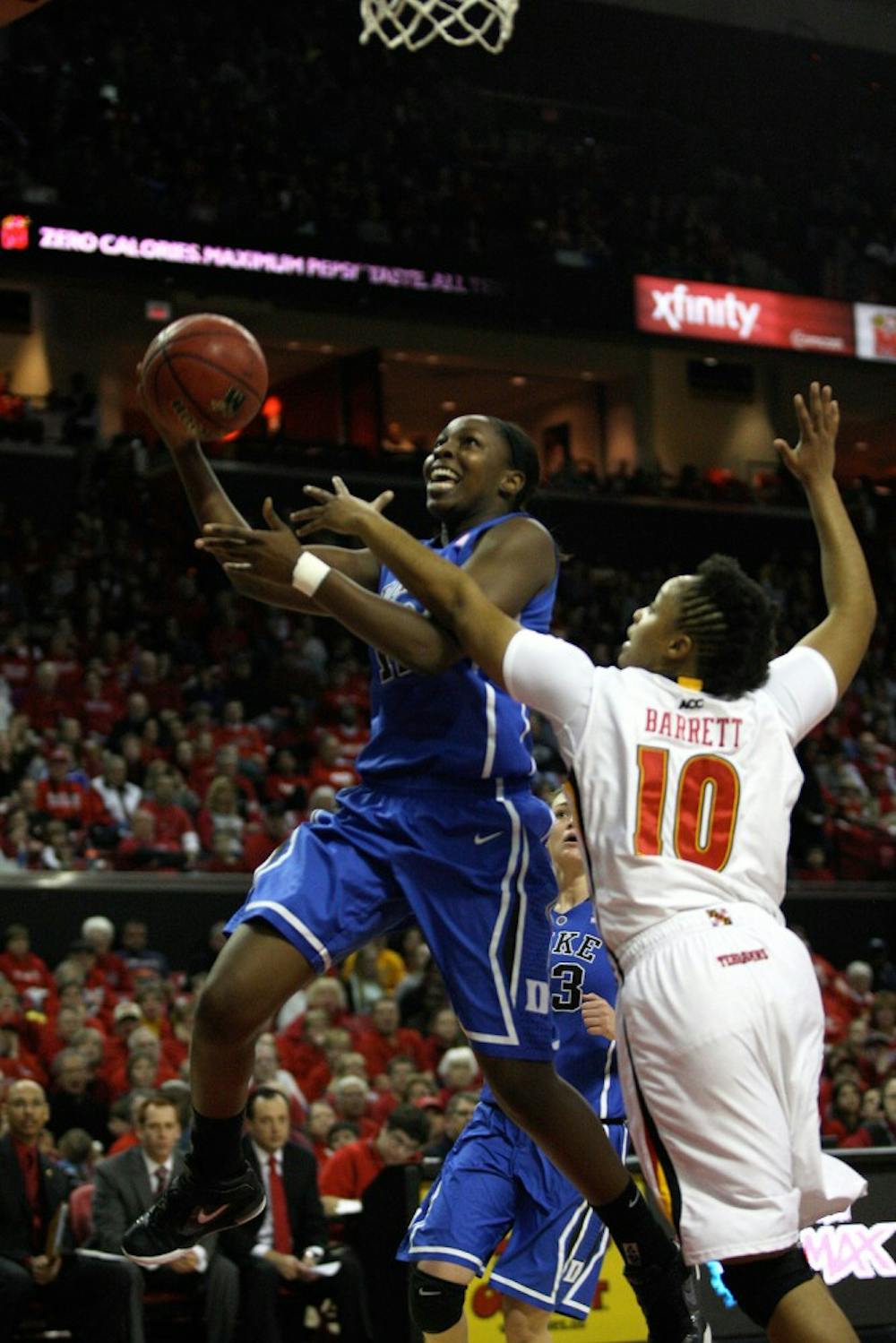The following is the first story in a two-part series that examines the relationship between Duke athletics and Title IX since 1972. Part one reflects on the history of the University’s compliance with Title IX, and part two will analyze how Title IX currently affects the athletic department.
In 1972, Duke athletics created a small travel budget for its seven women’s varsity teams as mandated under a vague new law informally called Title IX. Forty years later, the department spends over $13 million annually to offer opportunities for 281 female athletes on 12 teams.
Officially named the Mink Equal Opportunity in Education Act, the bill that contains the Title IX provision was signed into law Jun. 23, 1972 by President Richard Nixon.
“The growth and the improvement of women’s athletics was happening,” said Deputy Director of Athletics Chris Kennedy, who has worked in the department since 1977 and also serves as the department’s compliance coordinator. “You cannot pretend that there were not talented kids out there who were Duke-level academically who could be athletes here and not provide them with the opportunity to do that.”
When Kennedy arrived at the University athletic department, though, there was no legal precedent for Title IX compliance. As a result, the school clashed with the U.S. Department of Health, Education and Welfare’s Office of Civil Rights in the late 1970s before establishing a three-prong method of policing Title IX compliance—the same one still used today—in 1979.
A school must meet one of the three prongs to be considered compliant under the regulations.
The first prong requires the ratio of male to female athletes be, according to the legal wording, “substantially proportional” to the overall ratio of undergraduate students. Prong two is closely related, stating that a university must expand the athletic opportunities for the underrepresented gender until it achieves proportionality.
Duke has focused its compliance efforts on following the third prong, which, in contrast to the first two, is a qualitative metric. Based on an eight-factor test, it evaluates whether or not a school has fully met the “interests and abilities of the underrepresented gender,” said Dan Cohen, Trinity ’97, an attorney specializing in Title IX compliance.
“[It is] difficult to demonstrate compliance with prong three,” Cohen said, “A judge or a jury may disagree with a school’s opinion about whether it complies.”
Duke, along with 24 other schools, was the subject of a complaint made by the National Women’s Law Center in 1997, which stated that the University did not provide enough athletic scholarships for women. The University had just approved a petition made by the women’s club lacrosse team, which wanted to be a varsity sport, the previous year.
Still, in order to settle the lawsuit, the athletic department started a women’s rowing team in 1999 and began phasing in 10 additional scholarships for female athletes. Duke also had to report to the Office of Civil Rights every six months for three years to demonstrate continuing compliance.
Despite the complications with proving prong-three conformity, about two-thirds of universities chose that as their barometer for Title IX compliance between 1992 and 2002, Cohen said.
“I have not been able to find anybody who ever won a court case citing prong three,” Kennedy said.
The decisions to add women’s lacrosse and rowing are part of a complicated decision-making process that balances student interest and Title IX compliance. This conflict is especially apparent in the debate over the addition of a softball team. There is not enough student interest on campus to warrant the move, Kennedy said, but eight other ACC schools have teams, creating a relatively cheap way to provide more varsity-level athletic opportunities to women on campus.
The future effects of Title IX legislation are difficult to predict, as the government continues to tinker with the law. In 2005, the U.S. Department of Education made it legal for schools to comply with prong three based on an email survey distributed yearly to evaluate the ability and interest of female students. Under President Barack Obama in 2010, that decision was reversed after it was opposed by the NCAA. The organization advised its member schools to promote stricter enforcement because compliance had become too easy.
“The transformation of women’s athletics has been one of the biggest changes over that time,” Kennedy said. “It’s a different world now. It’s a more lucrative world. It’s a more attractive world. It’s a more respected world than it used to be, particularly on the women’s side.”
Get The Chronicle straight to your inbox
Signup for our weekly newsletter. Cancel at any time.

